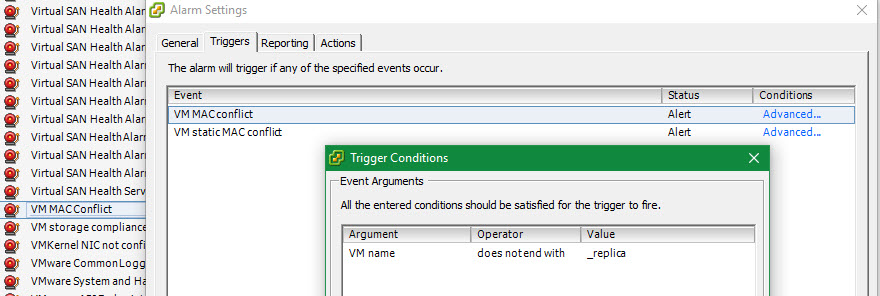

Solution: Change vCenter instance1 ID and restart vCenter services and stop migrating between instances while still deploying to instance1. Server2 is now built with the same UUID’s, MACs, OS Name, etc as Node1. SCCM returns the record of Server1 which has been on the network for months now. It requests its build information via MAC address. To continue on with the process, the VM is added to an SCCM collection for OS deployment. Instance1 no longer see’s that MAC as unavailable since it’s been migrated to instance2 and assigns it out again. Introducing an LAA prefix leads to a very large MAC address space (2 to the power of 46) instead of an universally unique address OUI which can give only 16 million MAC addresses. Server2 created on instance1 has a duplicate MAC of Server1 now on instance2. Prefix-based MAC address allocation overcomes the limits of the default VMware allocation to provide unique addresses in larger scale deployments.Server1 created on vCenter instance1 and then migrated to instance2 several months later.A virtual machine is a virtual machine that runs on vmx. However, if you’re running in a multiple vCenter server environment and migrating hosts and VM’s from one instance to the other, you’re likely to see this issue. As part of the VMware OUI allocation scheme, the hypervisor generates MAC addresses that contain the VMware OUI 00:0C:29 and the last three octets of the virtual machine UUID in hexadecimal format. In a single vCenter instance environment, there isn’t an issue with duplicate addresses. There is no minimum or maximum number of digits you must pass as the parameter, so if you just type the OUI of VMWare MacMakeup will generate the host part, if you go further and pass 00505612 only the last 4 digits will be appended.

In this case the remaining part of the MAC is randomly generated. The final MAC will be in the form of 00:50:56:xx:yy:yy. You can type a partial MAC address, for example 005056 (VMWare). The remaining 2 octets are generated from a hash based on the name of the entity the MAC is being generated for. Each VM within this vCenter instance will have a MAC address starting with 00:50:56:xx.

#VMWARE MAC ADDRESS OUI INSTALL#
The second part is one octet based on the vCenter server’s unique ID which is automatically generated at install time. The first part is VMware’s OUI, 00:50:56, this will never change. So let’s look at how vCenter generates MAC addresses. The issue: duplicate MAC addresses in vCenter and SCCM. Server2 assumes the name of an already existing node (server1) on the network and knocks it out of Active Directory. 00:0C:29 (Used when auto-generating a MAC for a VM created directly on an ESXi host) 00:50:56 (Used for vCenter generated & static MAC addresses) 00:05:69 (Used for auto-generated MACs on ESX 1.0 - 2. A VM (server2) is created in vCenter and OS deployed via SCCM. The next two letters of the MAC addresses must be in a range between 00-3F which is a restriction from VMWare.If you put the the letters outside the range, it will fail to power on. Mac-Address starting with 00:50:56 are manufactured by VMware. I ran into an issue the other day and thought I would share my experiences. The first six letters of the Mac-Address represents OUI which is vendor specific who manufactures the network card.


 0 kommentar(er)
0 kommentar(er)
